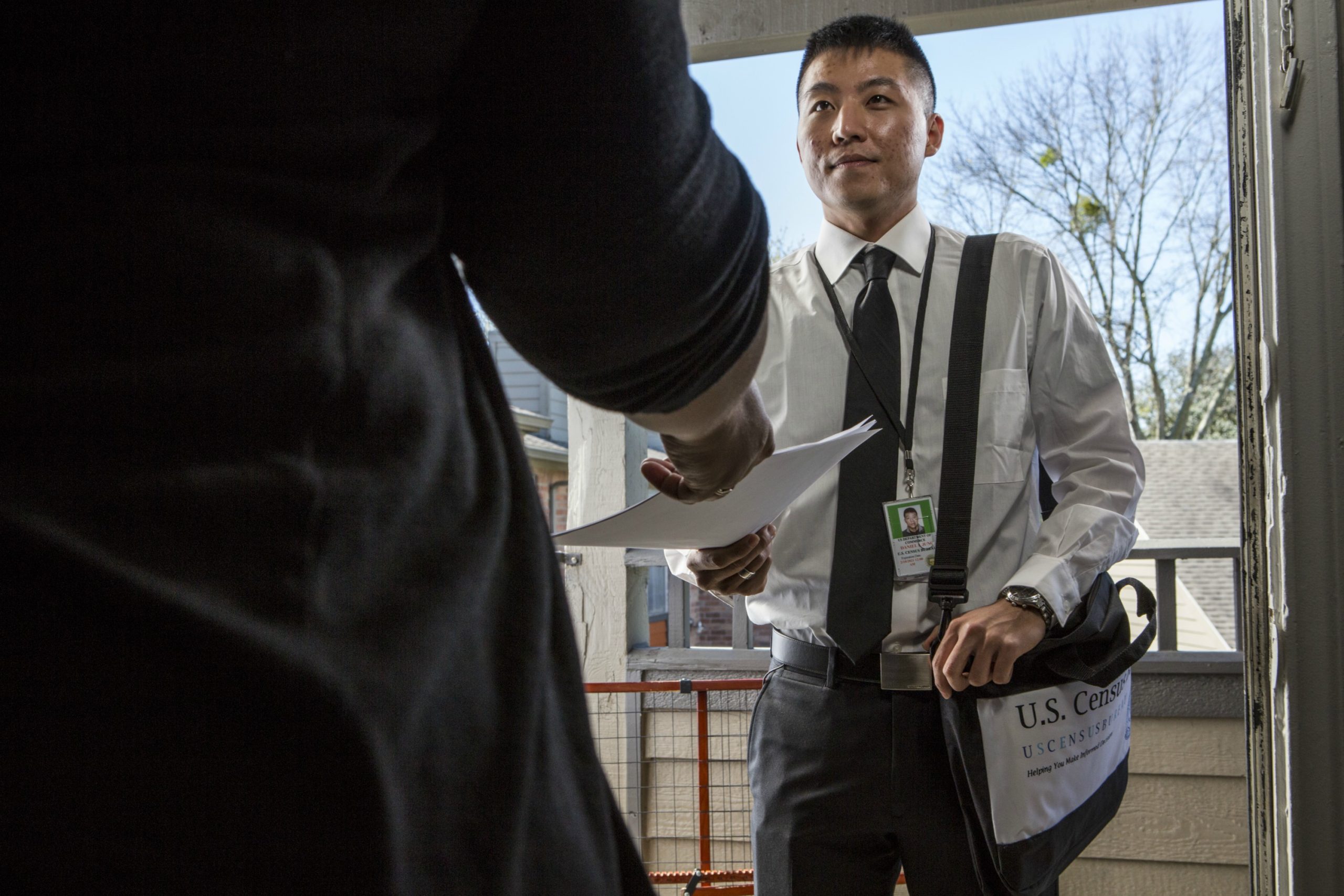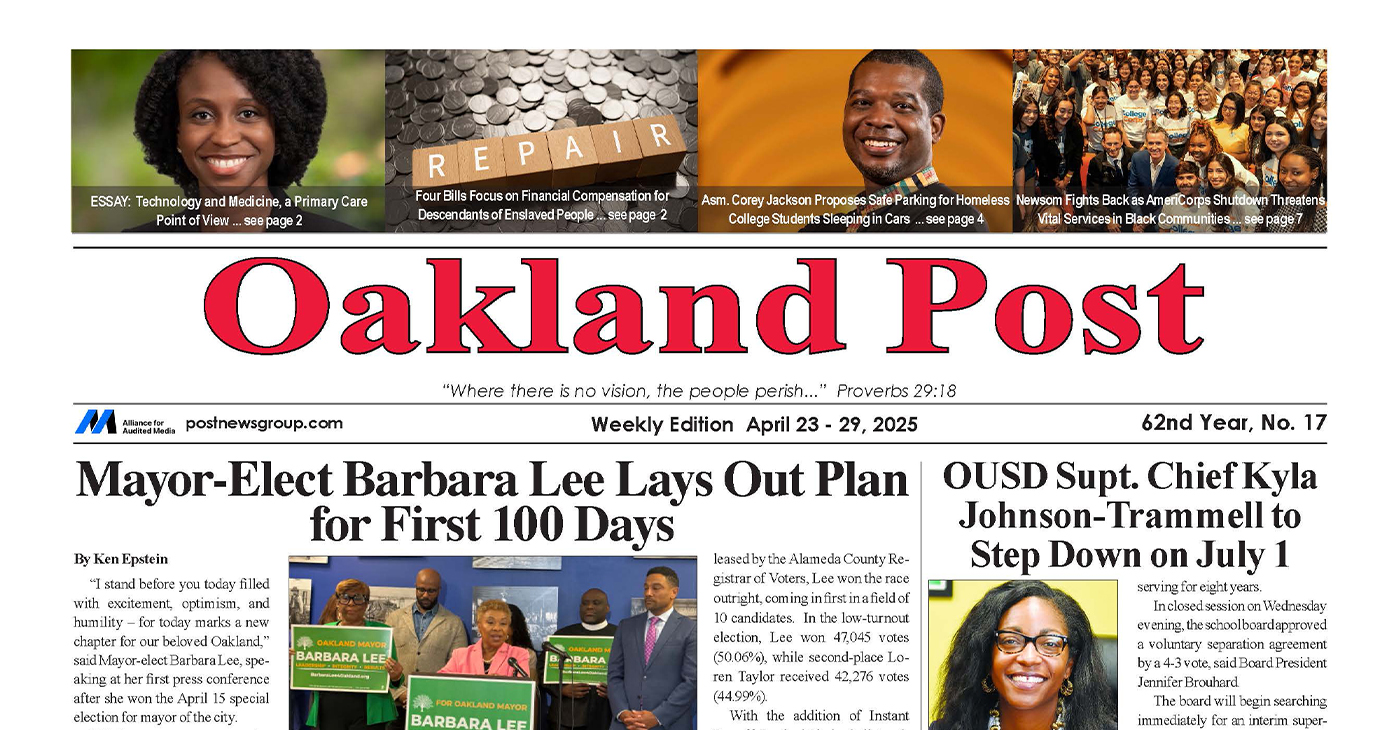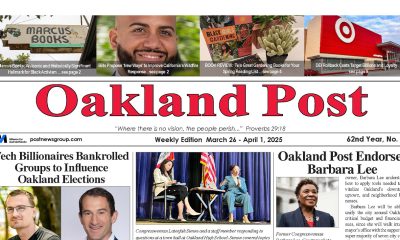Community
Marin Focusing on Outreach for 2020 Census

Participation will determine federal funding and representation for local residents
The Marin County Board of Supervisors on July 9 considered authorization of a public outreach contract to increase awareness and maximize local participation in the 2020 U.S. Census.
On June 27, the U.S. Supreme Court blocked the addition of a citizenship question on the census sought by the Trump Administration. On July 2, the White House said it would print the census forms without a citizenship question. Local plans for administering the census on April 1, 2020, are moving forward.
“An accurate census count is critical not only on a national scale but here in Marin County,” said Board President Kate Sears, Co-Chair of Marin’s Complete Count Committee. “With an accurate count, we learn more about who we are, how we’re growing, and what our needs are now and in the future.”
Supervisor Dennis Rodoni, the Complete Count Committee Co-Chair, said census participation secures federal funding for many programs and services. “People living here depend on those programs to live safe, secure, healthy lives,” he said. “Undercounting would limit that funding and skew numbers that help assure accurate voter representation.”
On February 5, 2019, the Board approved an $100,000 opt-in outreach agreement from the California Complete Count Census 2020 office to fund outreach and assistance activities to ensure a complete and accurate count for the 2020 census. The County and the Marin Community Foundation have contributed an additional $50,000 each toward the effort. On July 9, the Board plans to consider an agreement with Canal Alliance, in the not-to-exceed amount of $120,000, to conduct countywide outreach for all hard-to-count local populations.
According to preliminary data, the Marin residents least likely to fill out a census form or considered “hard to count” by census workers are those living in West Marin, Marin City, San Rafael’s Canal neighborhood and Lincoln Avenue, and pockets of downtown Novato. “Hard-to-count” populations include racial and ethnic minorities, people who speak languages other than English, those with low internet proficiency, young people who move frequently or have plans to move soon, and rural residents, all people at risk of low response. Others might be willing but have limited access to technology and, as a result, are considered difficult to reach by an online survey.
This census is being labeled as the “first digital census” whereby households will have the option of responding online, by mail, or by phone. Nearly every household will receive an invitation to participate in the census from either a postal worker or a census worker, but it’s expected that 95 percent of residents will receive an invitation by mail. To spread out the number of users responding online, the U.S. Postal Service will stagger the delivery of the invitations over several days. By its own estimates, the federal government expects less than 1 percent of households will be counted in person by a census official, most of those being residents living in remote areas.
Earlier this year, the County’s Community Development Agency (CDA) – in partnership with the City of San Rafael, City of Novato and Canal Alliance – created MarinCensus2020.org and established a Complete Count Committee comprised of a wide variety of residents. The committee’s goal is to help create encouraging messages that explain the importance of the census and assure confidentiality. About 50 committee members met in March. They are working with state, regional, and local community organizations to coordinate census promotions in different languages.
“One vital way to increase participation is by reaching people in the languages they are most comfortable speaking,” Rodoni said. “People who live here are part of the Marin community, and the more we know the better we can serve them in culturally sensitive and authentic ways.”
In 1990, an estimated 4 million Californians were not counted, leading to the loss of a seat in the U.S. House of Representatives and a shortfall of about $2 billion in federal funding. The state received an estimated $115 billion in federal funding in 2016-17 tied to the state’s population count.
Five barriers have been identified that might prevent people from participating:
- concerns about data privacy and confidentiality;
- the fear of repercussions;
- distrust in all levels of government;
- the feeling that it doesn’t matter to be counted; and
- the belief that filling out the census form might not benefit the participant.
Questions about the census? Most are answered on MarinCensus2020.org and www.census.gov.
Activism
Oakland Post: Week of April 23 – 29, 2025
The printed Weekly Edition of the Oakland Post: Week of April 23 – 29, 2025

To enlarge your view of this issue, use the slider, magnifying glass icon or full page icon in the lower right corner of the browser window.
#NNPA BlackPress
Chavis and Bryant Lead Charge as Target Boycott Grows
BLACKPRESSUSA NEWSWIRE — Surrounded by civil rights leaders, economists, educators, and activists, Bryant declared the Black community’s power to hold corporations accountable for broken promises.

By Stacy M. Brown
BlackPressUSA.com Senior National Correspondent
Calling for continued economic action and community solidarity, Dr. Jamal H. Bryant launched the second phase of the national boycott against retail giant Target this week at New Birth Missionary Baptist Church in Atlanta. Surrounded by civil rights leaders, economists, educators, and activists, Bryant declared the Black community’s power to hold corporations accountable for broken promises. “They said they were going to invest in Black communities. They said it — not us,” Bryant told the packed sanctuary. “Now they want to break those promises quietly. That ends tonight.” The town hall marked the conclusion of Bryant’s 40-day “Target fast,” initiated on March 3 after Target pulled back its Diversity, Equity, and Inclusion (DEI) commitments. Among those was a public pledge to spend $2 billion with Black-owned businesses by 2025—a pledge Bryant said was made voluntarily in the wake of George Floyd’s murder in 2020.“No company would dare do to the Jewish or Asian communities what they’ve done to us,” Bryant said. “They think they can get away with it. But not this time.”
The evening featured voices from national movements, including civil rights icon and National Newspaper Publishers Association (NNPA) President & CEO Dr. Benjamin F. Chavis Jr., who reinforced the need for sustained consciousness and collective media engagement. The NNPA is the trade association of the 250 African American newspapers and media companies known as The Black Press of America. “On the front page of all of our papers this week will be the announcement that the boycott continues all over the United States,” said Chavis. “I would hope that everyone would subscribe to a Black newspaper, a Black-owned newspaper, subscribe to an economic development program — because the consciousness that we need has to be constantly fed.” Chavis warned against the bombardment of negativity and urged the community to stay engaged beyond single events. “You can come to an event and get that consciousness and then lose it tomorrow,” he said. “We’re bombarded with all of the disgust and hopelessness. But I believe that starting tonight, going forward, we should be more conscious about how we help one another.”
He added, “We can attain and gain a lot more ground even during this period if we turn to each other rather than turning on each other.” Other speakers included Tamika Mallory, Dr. David Johns, Dr. Rashad Richey, educator Dr. Karri Bryant, and U.S. Black Chambers President Ron Busby. Each speaker echoed Bryant’s demand that economic protests be paired with reinvestment in Black businesses and communities. “We are the moral consciousness of this country,” Bryant said. “When we move, the whole nation moves.” Sixteen-year-old William Moore Jr., the youngest attendee, captured the crowd with a challenge to reach younger generations through social media and direct engagement. “If we want to grow this movement, we have to push this narrative in a way that connects,” he said.
Dr. Johns stressed reclaiming cultural identity and resisting systems designed to keep communities uninformed and divided. “We don’t need validation from corporations. We need to teach our children who they are and support each other with love,” he said. Busby directed attendees to platforms like ByBlack.us, a digital directory of over 150,000 Black-owned businesses, encouraging them to shift their dollars from corporations like Target to Black enterprises. Bryant closed by urging the audience to register at targetfast.org, which will soon be renamed to reflect the expanding boycott movement. “They played on our sympathies in 2020. But now we know better,” Bryant said. “And now, we move.”
#NNPA BlackPress
The Department of Education is Collecting Delinquent Student Loan Debt
BLACKPRESSUSA NEWSWIRE — the Department of Education will withhold money from tax refunds and Social Security benefits, garnish federal employee wages, and withhold federal pensions from people who have defaulted on their student loan debt.

By April Ryan
Trump Targets Wages for Forgiven Student Debt
The Department of Education, which the Trump administration is working to abolish, will now serve as the collection agency for delinquent student loan debt for 5.3 million people who the administration says are delinquent and owe at least a year’s worth of student loan payments. “It is a liability to taxpayers,” says White House Press Secretary Karoline Leavitt at Tuesday’s White House Press briefing. She also emphasized the student loan federal government portfolio is “worth nearly $1.6 trillion.” The Trump administration says borrowers must repay their loans, and those in “default will face involuntary collections.” Next month, the Department of Education will withhold money from tax refunds and Social Security benefits, garnish federal employee wages, and withhold federal pensions from people who have defaulted on their student loan debt. Leavitt says “we can not “kick the can down the road” any longer.”
Much of this delinquent debt is said to have resulted from the grace period the Biden administration gave for student loan repayment. The grace period initially was set for 12 months but extended into three years, ending September 30, 2024. The Trump administration will begin collecting the delinquent payments starting May 5. Dr. Walter M. Kimbrough, president of Talladega College, told Black Press USA, “We can have that conversation about people paying their loans as long as we talk about the broader income inequality. Put everything on the table, put it on the table, and we can have a conversation.” Kimbrough asserts, “The big picture is that Black people have a fraction of wealth of white so you’re… already starting with a gap and then when you look at higher education, for example, no one talks about Black G.I.’s that didn’t get the G.I. Bill. A lot of people go to school and build wealth for their family…Black people have a fraction of wealth, so you already start with a wide gap.”
According to the Education Data Initiative, https://educationdata.org/average-time-to-repay-student-loans It takes the average borrower 20 years to pay their student loan debt. It also highlights how some professional graduates take over 45 years to repay student loans. A high-profile example of the timeline of student loan repayment is the former president and former First Lady Barack and Michelle Obama, who paid off their student loans by 2005 while in their 40s. On a related note, then-president Joe Biden spent much time haggling with progressives and Democratic leaders like Senators Elizabeth Warren and Chuck Schumer on Capitol Hill about whether and how student loan forgiveness would even happen.
-

 Activism3 weeks ago
Activism3 weeks agoOakland Post Endorses Barbara Lee
-

 Activism4 weeks ago
Activism4 weeks agoOakland Post: Week of March 28 – April 1, 2025
-

 Activism3 weeks ago
Activism3 weeks agoOakland Post: Week of April 2 – 8, 2025
-

 #NNPA BlackPress3 weeks ago
#NNPA BlackPress3 weeks agoTrump Profits, Black America Pays the Price
-

 Activism2 weeks ago
Activism2 weeks agoOakland Post: Week of April 9 – 15, 2025
-

 #NNPA BlackPress3 weeks ago
#NNPA BlackPress3 weeks agoHarriet Tubman Scrubbed; DEI Dismantled
-

 #NNPA BlackPress3 weeks ago
#NNPA BlackPress3 weeks agoLawmakers Greenlight Reparations Study for Descendants of Enslaved Marylanders
-

 #NNPA BlackPress3 weeks ago
#NNPA BlackPress3 weeks agoTrump Targets a Slavery Removal from the National Museum of African-American History and Culture














































